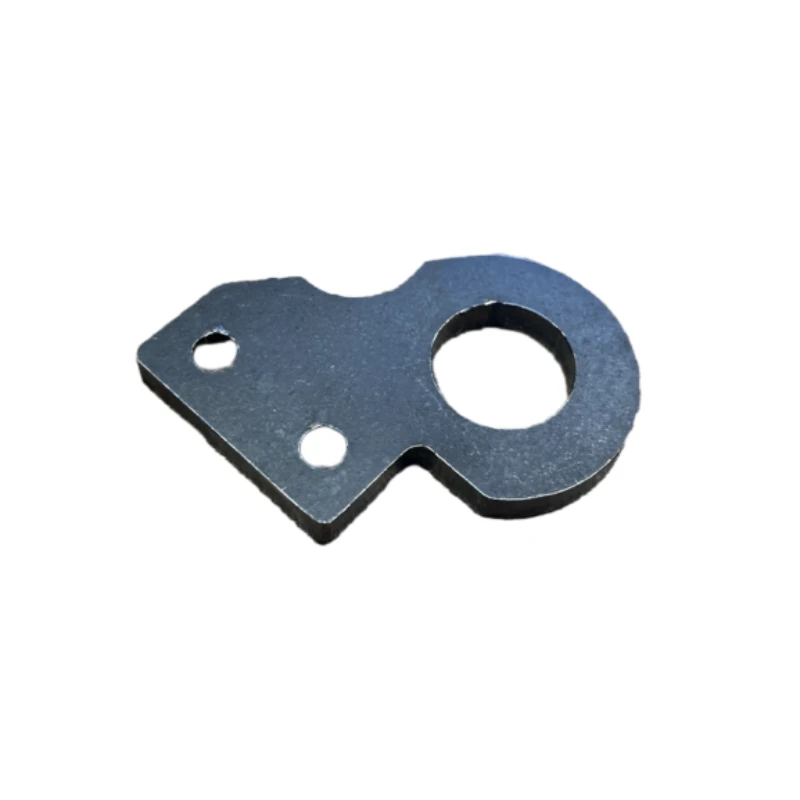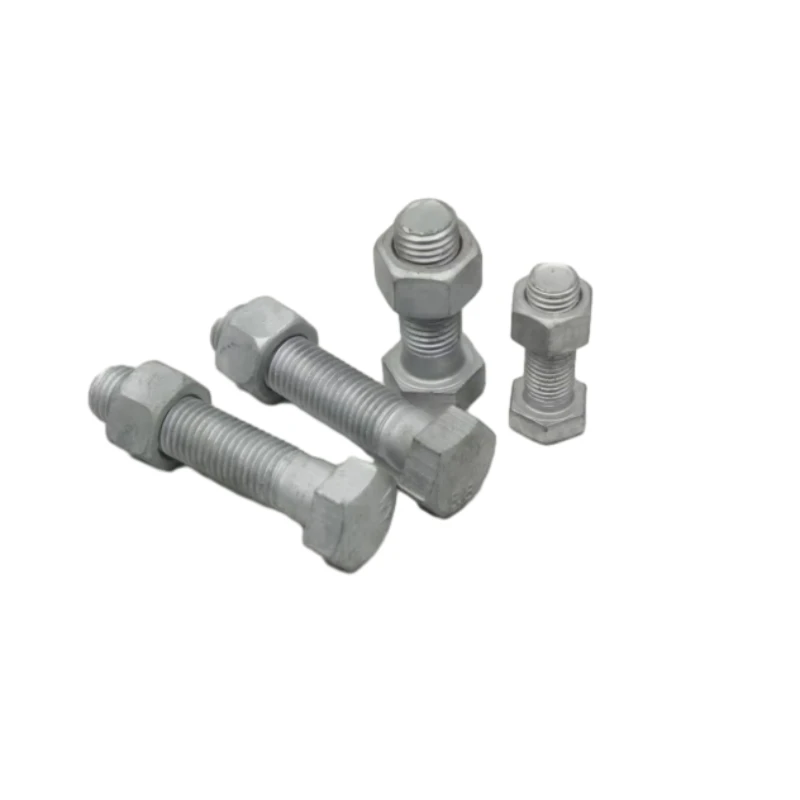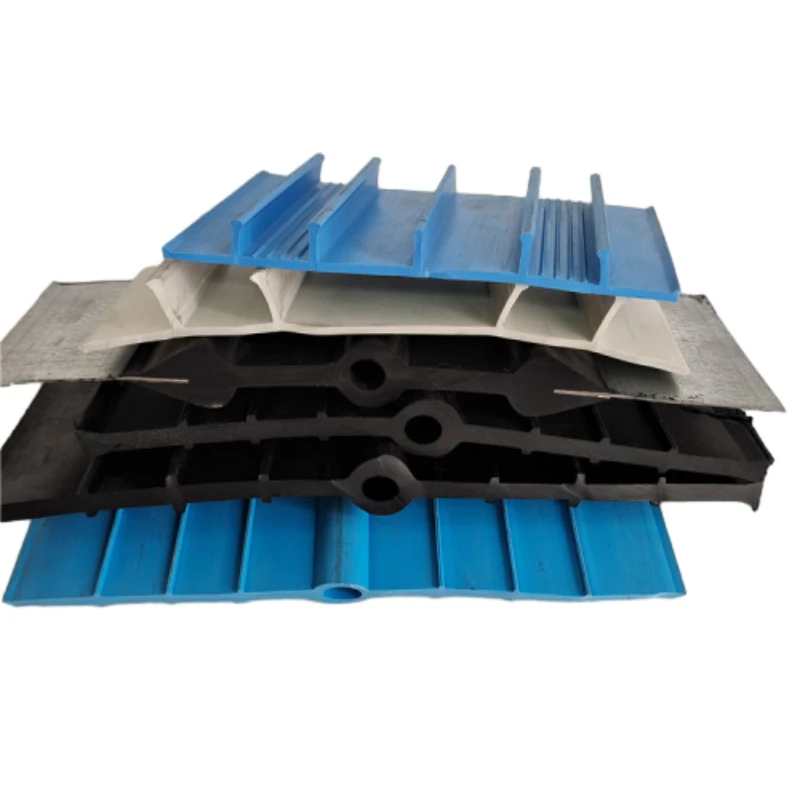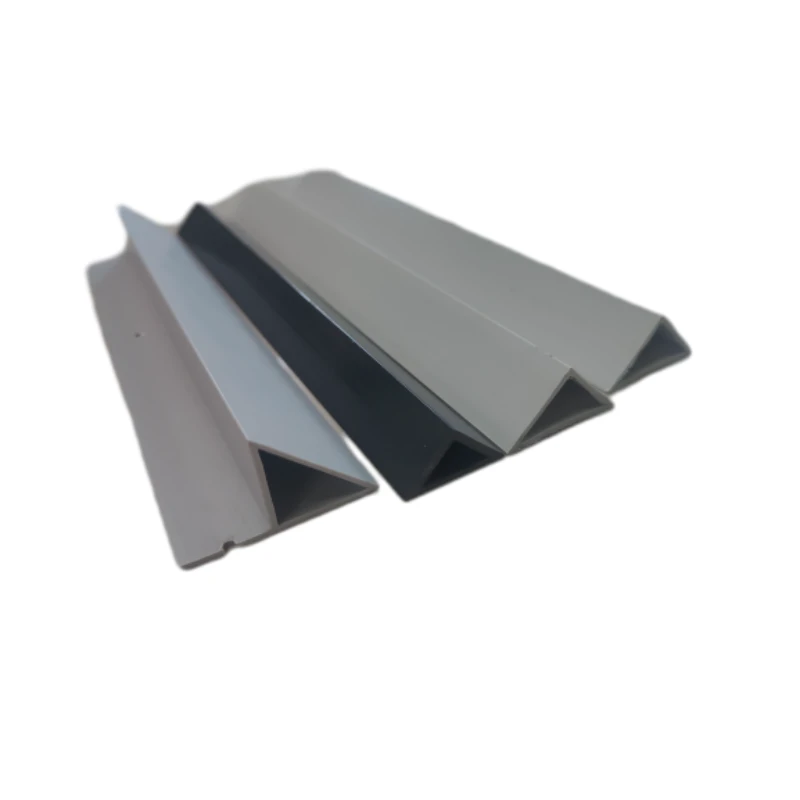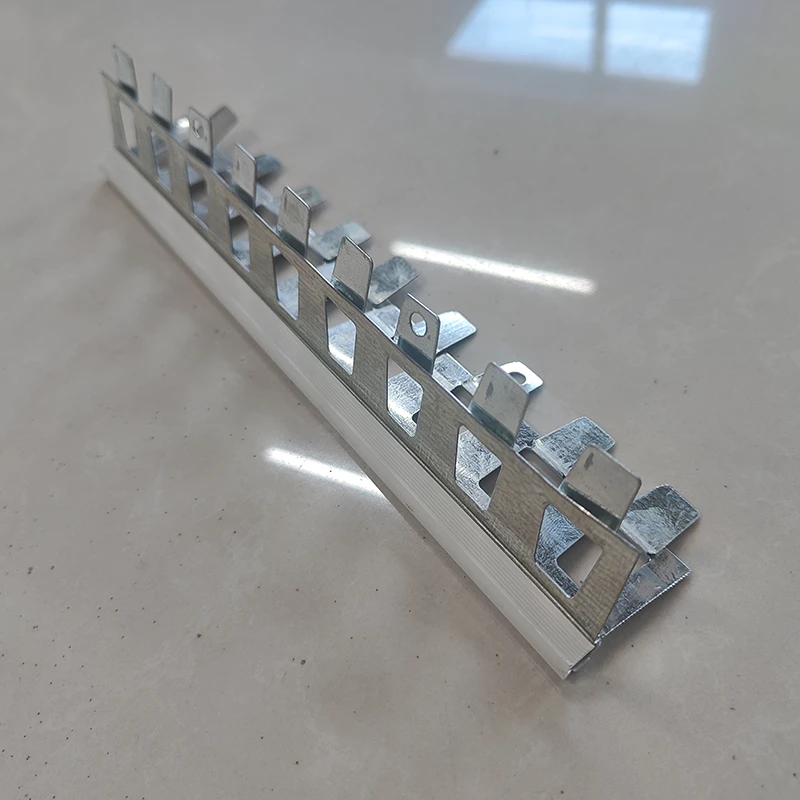- Phone: +86 132 8320 1810
- Email: annie@wrkgroup.ltd
-
- Afrikaans
- Albanian
- Amharic
- Arabic
- Armenian
- Azerbaijani
- Basque
- Belarusian
- Bengali
- Bosnian
- Bulgarian
- Catalan
- Cebuano
- China
- China (Taiwan)
- Corsican
- Croatian
- Czech
- Danish
- Dutch
- English
- Esperanto
- Estonian
- Finnish
- French
- Frisian
- Galician
- Georgian
- German
- Greek
- Gujarati
- Haitian Creole
- hausa
- hawaiian
- Hebrew
- Hindi
- Miao
- Indonesian
- Italian
- Japanese
- Javanese
- Malay
- Persian
- Portuguese
- Punjabi
- Russian
- Spanish
- Swahili
- Telugu
- Vietnamese
Aug . 07, 2025 05:00 Back To List
Precision Stamping Hardware: Custom Metal Components
In the intricate world of manufacturing and engineering, the integrity and performance of components often hinge on the quality of their foundational elements. Among these, stamping hardware stands as a cornerstone, offering unparalleled precision, cost-efficiency, and versatility. This comprehensive guide delves into the universe of **stamping hardware**, exploring its industry trends, technical nuances, diverse applications, and the strategic advantages of choosing expert OEM solutions like our OEM Stamped Hardwares. We aim to provide an authoritative resource for engineers, procurement specialists, and industry leaders seeking reliable and high-performance solutions.
Navigating the Evolving Landscape of Stamping Hardware: Industry Trends and Innovations
The global stamping hardware market is a dynamic arena, projected to witness substantial growth driven by advancements in automation, demand for lightweight materials, and the increasing complexity of electronic devices. According to a report by Grand View Research, the global metal stamping market size was valued at USD 206.8 billion in 2022 and is expected to grow at a compound annual growth rate (CAGR) of 3.8% from 2023 to 2030. This growth is largely fueled by the automotive sector's shift towards electric vehicles, which require a high volume of precisely stamped components, and the burgeoning electronics industry.
Key trends shaping the future of stamping hardware include:
- Automation and Industry 4.0 Integration: Smart factories leveraging IoT, AI, and robotics are optimizing stamping processes, enhancing precision, and reducing human error. This leads to higher throughput and more consistent quality for products like OEM Stamped Hardwares.
- Advanced Materials: The increasing use of high-strength steel, aluminum alloys, and composites demands more sophisticated stamping techniques and tooling to maintain integrity and achieve desired properties.
- Miniaturization: As electronic devices become smaller and more powerful, the need for intricate, micro-stamped components with extreme precision continues to grow, posing new challenges and opportunities for hardware stamping.
- Sustainability: Manufacturers are focusing on reducing waste, optimizing material usage, and implementing energy-efficient processes to meet environmental regulations and consumer demand for eco-friendly products.
- Electrification of Vehicles: The rapid transition to electric vehicles (EVs) is a major driver, with EVs requiring a unique array of stamped parts for battery casings, motor components, and power electronics, distinct from traditional internal combustion engine (ICE) vehicles.
Technical Parameters of OEM Stamped Hardwares: Precision in Every Detail
The performance of stamping hardware is defined by its adherence to stringent technical specifications. Our OEM Stamped Hardwares are engineered to meet and exceed industry standards, ensuring reliability and longevity across diverse applications.
Common Materials Used in Stamping:
- Steel Alloys: Carbon steel (e.g., cold rolled steel, hot rolled steel), stainless steel (e.g., 304, 316, 430), galvanized steel. These offer excellent strength-to-weight ratios and versatility.
- Aluminum Alloys: Lightweight and corrosion-resistant, ideal for applications where weight is critical (e.g., automotive, aerospace). Common alloys include 1100, 3003, 5052, 6061.
- Copper & Brass: Excellent electrical conductivity, thermal conductivity, and corrosion resistance, making them ideal for electrical components and decorative applications.
- Specialty Alloys: Nickel alloys, titanium, and other exotic metals are used for specific high-performance or extreme environment applications.
Key Stamping Parameters and Typical Ranges:
Understanding these parameters is crucial for ensuring the stamped part meets the functional and structural requirements of the final assembly.
| Parameter | Description | Typical Range for Stamping Hardware | Impact on Performance |
|---|---|---|---|
| Material Thickness | Gauge or thickness of the sheet metal used. | 0.005 inches to 0.5 inches (0.127 mm to 12.7 mm) | Affects strength, rigidity, and overall weight. Thicker materials require more tonnage. |
| Dimensional Tolerance | Permissible variation in part dimensions from nominal. | ±0.001 inches to ±0.010 inches (±0.025 mm to ±0.254 mm), often tighter for precision parts. | Crucial for fit, assembly, and interchangeability. Adherence to standards like ISO 2768 (General Tolerances). |
| Flatness | Degree to which a surface approximates a true plane. | Typically 0.001-0.005 inches per inch of length, depending on material and thickness. | Important for mating surfaces, seals, and overall aesthetic. |
| Hole Diameter Tolerance | Permissible variation in hole dimensions. | ±0.0005 inches to ±0.002 inches (±0.0127 mm to ±0.0508 mm) | Critical for fastener fit (e.g., `black nuts and bolts hardware`), alignment, and pin retention. |
| Surface Finish | The texture or condition of the surface (e.g., Ra value for roughness). | As-stamped (matte to semi-gloss) or specified post-processing (e.g., plating, powder coating). | Affects corrosion resistance, appearance, friction, and adhesion of coatings. |
| Mechanical Properties | Tensile Strength, Yield Strength, Hardness (e.g., Rockwell, Brinell). | Material-dependent (e.g., Stainless Steel 304: Tensile ~515 MPa, Yield ~205 MPa) | Determines load-bearing capacity, resistance to deformation, and wear. |
| Burr Height | The projection of material formed at the edge of a part during cutting. | Typically 5-15% of material thickness, minimized by tooling design and secondary operations. | Excessive burrs can hinder assembly, cause wear, or pose safety hazards. |
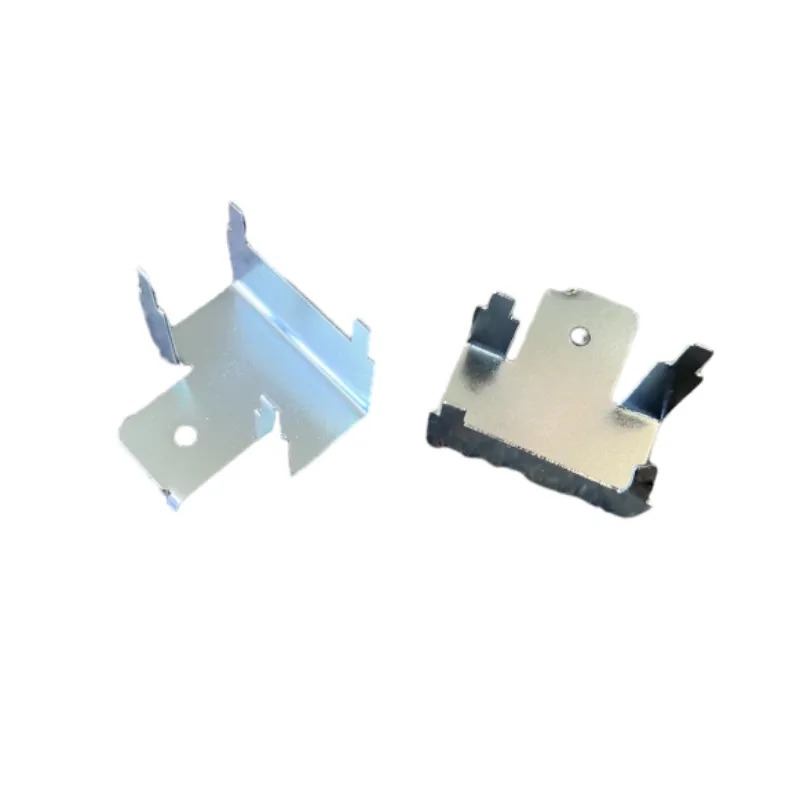
The Meticulous Craft of Stamping Hardware Manufacturing: A Deep Dive into Process Flow
The manufacturing of stamping hardware is a highly precise and automated process that transforms flat sheet metal into complex, three-dimensional components. Unlike casting (where molten metal is poured into a mold) or forging (where metal is shaped by compressive forces), stamping involves using dies and presses to cut, bend, and form sheet metal. CNC machining, while offering extreme precision, is often used for prototype or low-volume runs, whereas stamping excels in high-volume, cost-effective production.
Typical Manufacturing Process Flow for OEM Stamped Hardwares
Conceptualization, CAD modeling (e.g., SolidWorks, AutoCAD), simulation, and precision die design based on part specifications and material properties. This stage is critical for achieving desired tolerances and part longevity.
Choosing the correct sheet metal alloy (steel, aluminum, brass, etc.) and ensuring it meets material standards (e.g., ASTM, EN). Material is typically uncoiled and flattened.
The initial stage where a flat "blank" (the basic shape of the part) is cut from the sheet metal, or holes are punched (pierced) into the material. This utilizes precise cutting dies.
The blank is then shaped through various operations like bending, drawing (deep drawing for cup-shaped parts), flanging, or coining (creating fine details or increasing material density). Progressive dies can perform multiple operations in a single press stroke.
Excess material is removed, and any sharp edges (burrs) created during the cutting process are smoothed out. This can be done mechanically, chemically, or through vibratory finishing.
For certain materials, processes like annealing, hardening, or tempering might be applied to alter mechanical properties (e.g., increase hardness, improve ductility, relieve stress). This ensures the `hardware stamping` maintains structural integrity.
Application of coatings for aesthetics, corrosion resistance, or improved wear properties. Common finishes include galvanizing, powder coating, painting, plating (nickel, zinc, chrome), or anodizing. This is particularly important for applications involving `black nuts and bolts hardware`.
Throughout the process, and especially at the final stage, parts undergo rigorous inspection using CMM (Coordinate Measuring Machine), optical comparators, gauges, and visual checks to ensure adherence to dimensional tolerances, material specifications, and aesthetic requirements. Compliance with ISO 9001 and industry-specific standards (e.g., IATF 16949 for automotive) is paramount.
If the stamped part is part of a larger assembly, it might be integrated here. Finally, parts are carefully packaged to prevent damage during transit, ready for delivery.
For a visual representation of the stamping hardware process, consider this conceptual video overview of metal stamping (placeholder for a real video link).
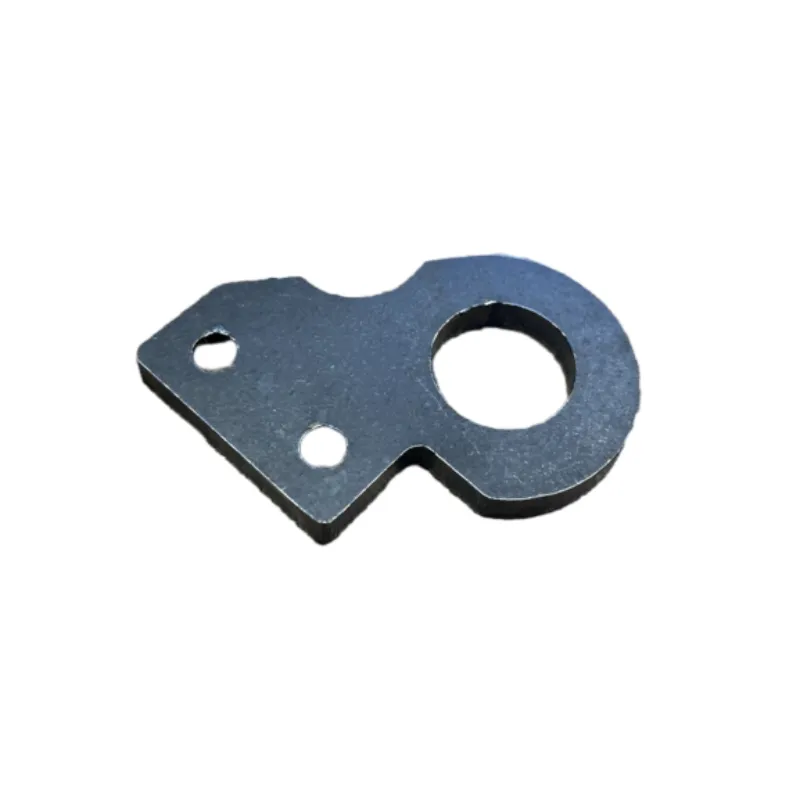
Diverse Application Scenarios and Unmatched Advantages of OEM Stamped Hardwares
The versatility of stamping hardware means it finds applications across an astonishing array of industries. From high-tech electronics to heavy industrial machinery, stamped parts are indispensable due to their cost-effectiveness for high-volume production, precision, and durability. Our OEM Stamped Hardwares are designed to excel in challenging environments and critical applications.
Key Applicable Industries:
- Automotive Industry: Stamped components are integral to vehicles, from structural parts (chassis, body panels) to internal engine components, brackets, seatbelt mechanisms, and electrical connectors. For instance, the average internal combustion engine vehicle contains over 2,000 stamped parts, while electric vehicles introduce new demands for battery enclosures and motor laminations, often requiring specialized hardware stamping techniques.
- Electronics & Telecommunications: Miniaturized, high-precision stamped parts are crucial for connectors, heat sinks, shielding, battery contacts, and casings in smartphones, computers, and networking equipment. The demand for tiny, yet robust, components is ever-growing.
- Construction: Various brackets, hangers, fasteners (including specialized black nuts and bolts hardware components), and structural connectors are produced through stamping. These components ensure the integrity and stability of buildings and infrastructure projects.
- Medical Devices: Precision stamped components are used in surgical instruments, implants, diagnostic equipment, and patient monitoring devices, where high precision, biocompatibility, and sterilization capabilities are paramount.
- Aerospace: Lightweight, high-strength stamped parts are used in aircraft interiors, structural components, and engine parts, contributing to fuel efficiency and safety. Materials like aluminum and titanium alloys are frequently stamped.
- Consumer Goods: Everyday items like appliances, tools, and furniture often contain numerous stamped parts for internal mechanisms, enclosures, and decorative elements.
- Petrochemical & Energy: Components for valves, pumps, heat exchangers, and drilling equipment require robust, corrosion-resistant stamped parts. Our products offer excellent resistance to harsh chemicals and high temperatures, ensuring a longer usage lifespan (e.g., 15-20 years in typical industrial use, subject to specific conditions and maintenance).
- Metallurgy & Mining: Stamped wear plates, screens, and structural supports are used in heavy machinery and processing equipment, designed for high durability and resistance to abrasion.
- Water Supply & Drainage: Flanges, brackets, and pipe connectors that require strong sealing and corrosion resistance, often utilizing specialized coatings, are commonly stamped. Our advanced surface finishing techniques enhance anti-corrosion properties, leading to significant maintenance cost savings.
Technical Advantages of OEM Stamped Hardwares:
Choosing OEM Stamped Hardwares translates into tangible benefits for your projects:
- Cost-Effectiveness for High Volume: Once tooling is created, the per-unit cost for stamping hardware is significantly lower than other manufacturing methods for mass production. This makes it ideal for large-scale projects, offering superior economies of scale.
- Exceptional Precision and Repeatability: Stamping presses offer tight tolerances and consistent quality, ensuring that every part is identical to the last. This consistency is crucial for automated assembly lines and critical applications.
- Versatility in Design: Stamping can create complex geometries, intricate features, and various forms from a single sheet of metal, accommodating diverse design requirements without extensive post-processing.
- Material Efficiency: Advanced nesting software optimizes material utilization, minimizing waste and reducing overall material costs. This also contributes to environmental sustainability.
- High Strength-to-Weight Ratio: Stamped parts can be engineered to be incredibly strong while remaining lightweight, especially with the use of advanced high-strength steels and aluminum alloys, contributing to energy efficiency in end-products (e.g., lighter automotive parts improve fuel economy).
- Corrosion Resistance & Longevity: Through strategic material selection (e.g., stainless steel, galvanized steel) and advanced surface treatments (e.g., electroplating, powder coating), **stamping hardware** can achieve superior corrosion resistance, extending product lifespan significantly and reducing replacement costs.
- Reduced Assembly Time: Precision hardware stamping components often come with integrated features like self-tapping holes, snap fits, or pre-assembled elements, simplifying subsequent assembly processes and reducing labor costs.
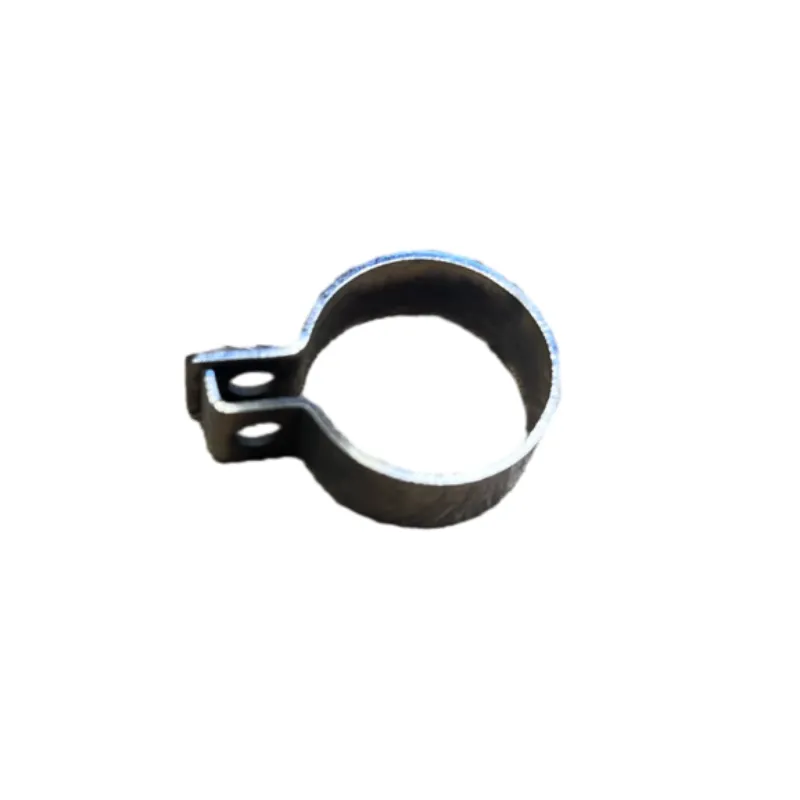
Strategic Partnership: Manufacturer Comparison and Selection for Your Stamping Hardware Needs
Choosing the right manufacturer for your stamping hardware is as crucial as the design itself. A reputable OEM partner like WRK Formwork brings not only manufacturing capability but also engineering expertise, quality assurance, and robust supply chain management.
Key Criteria for Evaluating Hardware Stamping Manufacturers:
When assessing potential partners for your OEM Stamped Hardwares, consider the following:
| Criterion | Importance | WRK Formwork's Commitment |
|---|---|---|
| Expertise & Experience | Demonstrated understanding of diverse materials, complex geometries, and industry-specific requirements. A long history of successful projects. | Over 20 years of specialized experience in metal fabrication and **stamping hardware**, serving global markets. Our team comprises seasoned engineers and metallurgists. Expertise Experience |
| Technology & Equipment | Access to state-of-the-art presses (mechanical, hydraulic, servo), CAD/CAM software, and advanced quality inspection tools (CMM, vision systems). | Equipped with high-precision stamping presses (up to 800-ton capacity), progressive dies, and automated production lines for unparalleled efficiency and accuracy. |
| Quality Certifications | Adherence to international standards like ISO 9001, IATF 16949 (for automotive), AS9100 (aerospace). | ISO 9001:2015 certified, demonstrating a robust quality management system. Strict adherence to client-specific standards (e.g., ANSI, ASTM) and internal quality protocols. Authoritativeness |
| Production Capacity & Scalability | Ability to handle both prototype runs and high-volume production, with flexibility to scale as demand changes. | Extensive production capacity to meet diverse order sizes, from small batches to millions of units annually, with efficient lead times. |
| Customization Capabilities | Willingness and ability to work on bespoke designs, material sourcing, and post-processing requirements. | Specialists in OEM solutions, offering comprehensive design-to-delivery services and tailored manufacturing processes for unique stamping hardware needs. |
| Supply Chain Management | Robust supplier network, efficient logistics, and risk mitigation strategies. | Optimized supply chain for timely material acquisition and global delivery, ensuring reliability and cost-efficiency. |
| Customer Support & Communication | Responsive communication, transparent progress updates, and strong technical support. | Dedicated account managers and technical support teams ensure seamless communication and immediate assistance throughout your project lifecycle. Trustworthiness |
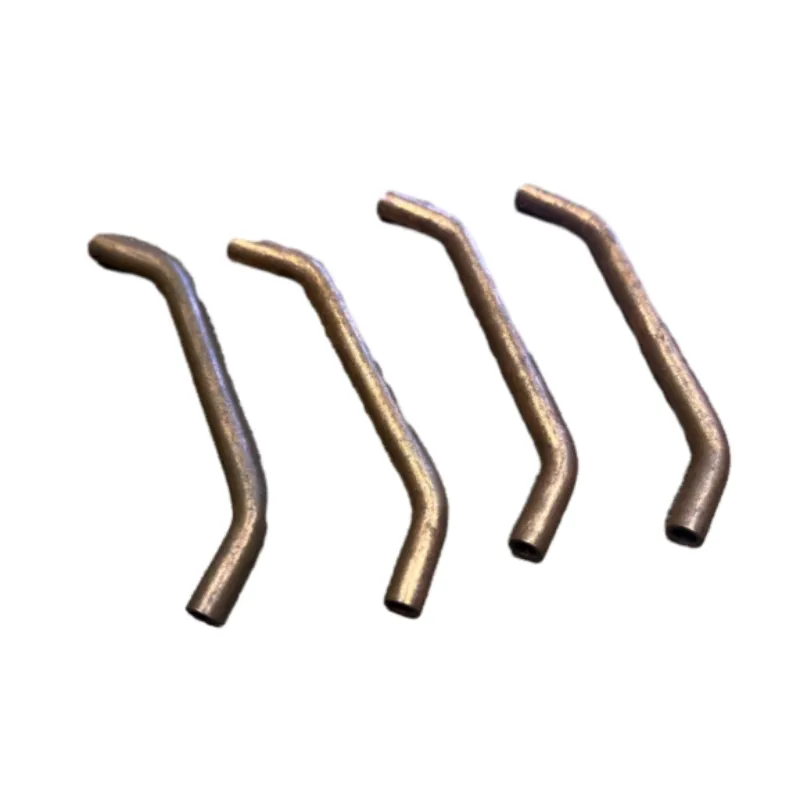
Tailored Solutions: Our Customization Process for OEM Stamped Hardwares
At WRK Formwork, we understand that off-the-shelf solutions rarely fit perfectly. Our strength lies in providing bespoke stamping hardware tailored precisely to your project's specifications. Our customization process is collaborative and transparent, ensuring your vision is realized with optimal efficiency and quality.
- Initial Consultation & Requirement Analysis: We begin by deeply understanding your application, desired function, environmental conditions (e.g., exposure to corrosive agents, extreme temperatures), and specific challenges. This includes discussing material preferences, tolerance requirements, and target cost.
- Design & Engineering Collaboration: Our expert engineers work closely with your design team. Utilizing advanced CAD software (e.g., SolidWorks, CATIA, AutoCAD), we refine designs for manufacturability (DFM), optimizing for stamping processes to ensure efficiency and reduce potential issues. We provide detailed drawings, 3D models, and even FEA (Finite Element Analysis) simulations to predict performance under stress.
- Prototyping & Iteration: For complex or critical components, we can produce prototypes using rapid prototyping methods or initial short-run stamping. This allows for physical testing and iterative refinement before full-scale production, minimizing risks and ensuring form, fit, and function.
- Material Selection & Sourcing: Based on the application and performance criteria, we recommend and source the most suitable materials, from common steels and aluminum to specialized alloys, ensuring compliance with relevant standards (e.g., ASTM, DIN, JIS). This includes selecting appropriate grades for strength, ductility, and corrosion resistance for parts like `black nuts and bolts hardware`.
- Tooling Design & Fabrication: Our in-house tooling capabilities allow for the precise design and manufacture of custom dies (progressive dies, compound dies, etc.) that are perfectly matched to your part's geometry and production volume. The quality of the tooling directly impacts the precision and longevity of the stamping hardware.
- Production & Quality Assurance: Once the design and tooling are approved, full-scale production commences using our advanced stamping machinery. Throughout production, rigorous in-process and final quality control checks are performed to ensure every component adheres to the agreed-upon specifications and international quality standards like ISO 9001.
- Post-Processing & Finishing: We offer a comprehensive range of secondary operations including deburring, cleaning, heat treatment, welding, assembly, and various surface finishes (e.g., powder coating, galvanizing, plating, anodizing) to meet the exact requirements of your application, enhancing durability and appearance.
Real-World Applications: Case Studies of WRK Formwork's OEM Stamped Hardwares
Our commitment to quality and precision has enabled us to partner with diverse industries, delivering reliable stamping hardware solutions for challenging applications. Here are a few examples demonstrating our capability and impact.
Case Study 1: High-Precision Automotive Bracket
Challenge: An automotive client required a complex bracket for a new EV battery module. The part demanded extremely tight tolerances (±0.002 inches) for critical mounting points, high strength-to-weight ratio to optimize vehicle performance, and robust corrosion resistance due to exposure to harsh under-hood conditions. The annual volume was projected to be over 1 million units.
Solution: We collaborated closely with the client's engineering team, recommending a specific grade of high-strength low-alloy (HSLA) steel for its optimal mechanical properties. Our design team developed a progressive die that enabled multiple stamping operations in a single stroke, ensuring consistent precision at high speed. A multi-stage zinc-nickel electroplating process was applied for superior corrosion protection, exceeding 1000 hours of salt spray testing (ASTM B117).
Result: We successfully delivered over 1.2 million units in the first year, meeting all dimensional, strength, and corrosion resistance specifications. The consistent quality of our OEM Stamped Hardwares reduced assembly line issues for the client by 15%, contributing to faster production cycles and higher overall product reliability.
Case Study 2: Medical Device Connector Components
Challenge: A medical device manufacturer needed miniature, high-conductivity connector pins and housing components for a portable diagnostic device. The parts required ultra-fine features, biocompatible materials, and exceptional electrical performance, produced in a sterile environment.
Solution: We utilized medical-grade stainless steel (316L) and specialized copper alloys for their biocompatibility and conductivity. Our micro-stamping capabilities, employing advanced compound dies, allowed us to achieve the required intricate geometries and tolerances as fine as ±0.0005 inches. The entire production was conducted in a controlled environment, followed by precision cleaning and passivation to ensure sterility and corrosion resistance suitable for medical applications.
Result: Our OEM Stamped Hardwares enabled the client to launch their new device on schedule, with the components seamlessly integrating into their automated assembly process. The superior electrical contact and material purity contributed to the device's reliability and patient safety. "Their precision and attention to detail were unmatched," noted the client's Head of R&D.
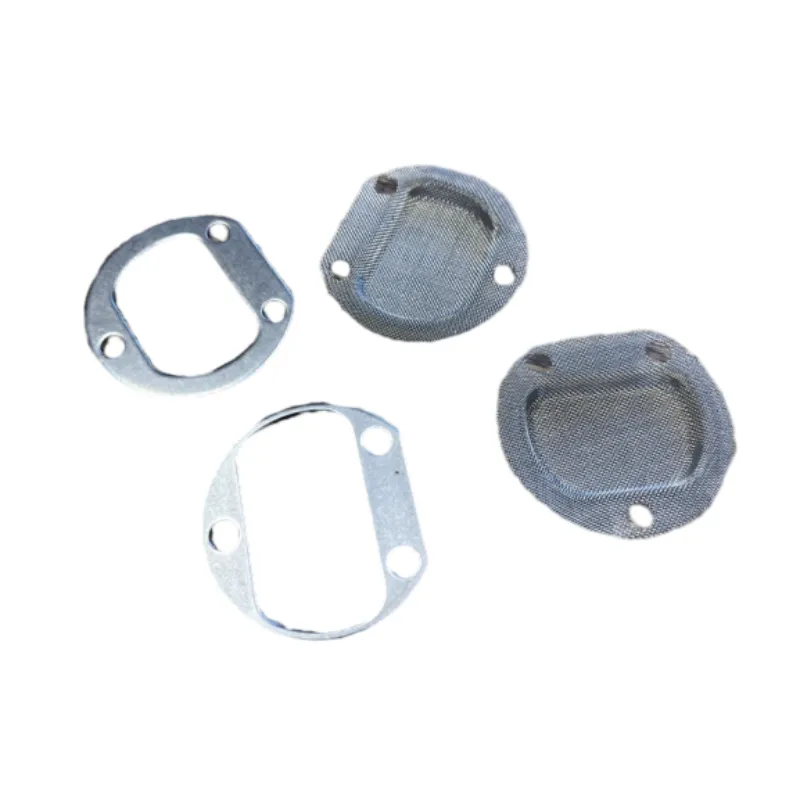
Ensuring Excellence: Quality, Trust, and Support for Your Stamping Hardware Needs
Our commitment extends beyond manufacturing to fostering enduring partnerships built on trust and reliability. We prioritize stringent quality control, transparent communication, and comprehensive customer support for all our OEM Stamped Hardwares.
Quality Assurance and Certifications Authoritativeness Trustworthiness
We operate under a robust Quality Management System, certified to ISO 9001:2015 standards, ensuring that every stage of our stamping hardware production adheres to the highest international benchmarks. Our facilities are equipped with advanced inspection tools, including Coordinate Measuring Machines (CMMs), optical comparators, and various material testing apparatus, allowing us to perform:
- Dimensional Verification
- Material Hardness Testing
- Tensile Strength and Yield Strength Analysis
- Corrosion Resistance Testing (e.g., Salt Spray Test per ASTM B117)
- Surface Roughness Measurement
Delivery Cycle and Logistics Trustworthiness
Our optimized production planning and efficient supply chain management ensure competitive lead times for your OEM Stamped Hardwares.
- Prototype/Sample Lead Time: Typically 3-5 weeks, depending on design complexity and tooling requirements.
- Production Lead Time: Once tooling is approved, standard production runs typically range from 4-8 weeks for initial large batches, with subsequent reorders often faster. Specific lead times are always provided with detailed quotes based on order volume, material availability, and current production schedules.
- Global Logistics: We facilitate efficient worldwide shipping, partnering with trusted logistics providers to ensure timely and secure delivery of your components.
Warranty and After-Sales Support Trustworthiness
We stand behind the quality of our stamping hardware. All OEM Stamped Hardwares are manufactured to agreed-upon specifications and applicable industry standards. We offer a warranty against defects in material and workmanship, typically for 12 months from delivery. Our dedicated customer support team is available to assist with any technical inquiries, order status updates, or after-sales service. We are committed to prompt resolution of any issues, ensuring complete client satisfaction.
Frequently Asked Questions (FAQ) about OEM Stamped Hardwares
Q1: What types of materials can be used for stamping hardware?
A1: We work with a wide range of materials including various grades of steel (carbon steel, stainless steel, galvanized steel), aluminum alloys (e.g., 1100, 3003, 5052, 6061), copper, brass, and some specialty alloys. Material selection depends on the application's specific requirements for strength, corrosion resistance, conductivity, and formability. For example, `black nuts and bolts hardware` often utilizes hardened steel with a black oxide finish for both strength and aesthetic.
Q2: What are the typical dimensional tolerances achievable with precision hardware stamping?
A2: With precision tooling and advanced presses, we can achieve very tight dimensional tolerances, typically in the range of ±0.001 to ±0.005 inches (±0.025 to ±0.127 mm), depending on material thickness, part geometry, and specific features. For highly critical features, even tighter tolerances can be achieved through specialized post-stamping processes.
Q3: How does WRK Formwork ensure the quality of its OEM Stamped Hardwares?
A3: Our quality assurance process is comprehensive, starting from material inspection and extending through every stage of manufacturing. We are ISO 9001:2015 certified, employ in-process and final inspections using CMMs, optical comparators, and various gauges. We also conduct mechanical property testing, corrosion resistance tests, and provide Certificates of Conformance (CoCs) with shipments.
Q4: What is the typical lead time for custom stamping hardware projects?
A4: Lead times vary based on project complexity, tooling requirements, and order volume. For initial prototypes or sample runs, it typically takes 3-5 weeks. For full production runs after tooling approval, lead times generally range from 4-8 weeks. We work closely with clients to establish realistic timelines and expedite orders when feasible.
Q5: Can you provide design assistance for stamping hardware?
A5: Absolutely. Our engineering team offers extensive design for manufacturability (DFM) support. We can help optimize your part design for the stamping process, recommend suitable materials, suggest cost-saving modifications, and ensure the final product meets all functional requirements and industry standards.
Q6: What surface finishes are available for OEM Stamped Hardwares?
A6: We offer a wide array of surface finishes to enhance appearance, corrosion resistance, and wear properties. Common options include zinc plating (clear, yellow, black), nickel plating, chrome plating, powder coating, painting, anodizing (for aluminum), galvanizing, and passivation. Specific finishes like black oxide are popular for aesthetic components like `black nuts and bolts hardware`.
Q7: What is the estimated usage lifespan of your stamping hardware in typical industrial applications?
A7: The lifespan of stamping hardware largely depends on the material, surface finish, application environment, and operational stresses. However, our OEM Stamped Hardwares are engineered for durability. In typical industrial environments (e.g., petrochemical, metallurgy, water supply), components made from standard materials with appropriate surface treatments can often have a service life of 15-20 years or more, assuming proper installation and maintenance. For highly corrosive or extreme temperature applications, specific material and coating selections can further extend this lifespan.
Conclusion: Partnering for Excellence in OEM Stamped Hardwares
The world of stamping hardware is characterized by precision, efficiency, and adaptability. As industries continue to evolve, the demand for high-quality, custom-engineered stamped components will only grow. At WRK Formwork, our dedication to advanced manufacturing techniques, rigorous quality control, and unparalleled customer service positions us as a leader in providing bespoke OEM Stamped Hardwares. From initial concept to final delivery, we are committed to being your trusted partner, ensuring your projects benefit from the superior performance and cost-effectiveness that only expertly crafted **stamping hardware** can provide. Explore our capabilities at https://www.wrkformwork.com/oem-stamped-hardwares.html to discover how we can elevate your next project.
Industry Insights and References
- Grand View Research. (2023). Metal Stamping Market Size, Share & Trends Analysis Report By Material (Ferrous, Non-ferrous), By Application (Automotive, Industrial), By Region, And Segment Forecasts, 2023 - 2030. Retrieved from https://www.grandviewresearch.com/industry-analysis/metal-stamping-market
- American Society for Testing and Materials (ASTM). (Various Standards). ASTM International. https://www.astm.org/
- International Organization for Standardization (ISO). (Various Standards, e.g., ISO 9001:2015, ISO 2768). https://www.iso.org/home.html
- The Fabricator. (Frequently updated articles and forums on metal forming and fabrication). https://www.thefabricator.com/
- ASM Handbook, Vol. 14B: Metalworking: Sheet Forming. (2012). ASM International. (Academic publication, often cited for in-depth metal forming processes).
This is the first article
Latest News
-
Durable Concrete Bridge Formwork & Shoring SolutionsNewsAug.06,2025
-
Tube & Clamp Scaffolding for Sale - Durable & CustomizableNewsAug.05,2025
-
AI-Optimized Building Shuttering SolutionsNewsAug.04,2025
-
Formwork for In Situ Concrete | AI-Optimized SolutionsNewsAug.02,2025
-
Premium Screw Jacks Scaffolding Systems - Efficient Height ControlNewsAug.01,2025



